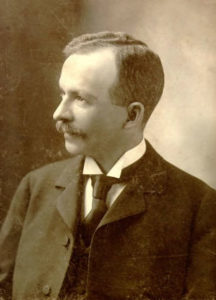Charles Waddell Chesnutt
(1858-1932), considered the first important African American
novelist. Between 1885 and 1905 Chesnutt published more than 50 tales, short stories, and essays, as well as two collections of short stories, a biography of antislavery leader Frederick Douglass, and three novels. His “The Goophered Grapevine,” the first work by a black writer accepted by The Atlantic Monthly (August 1887), was so subtle in its refutation of the plantation school of Thomas Nelson Page that most readers missed the irony. This and similarly authentic stories of folk life among North Carolina blacks were collected in The Conjure Woman (1899). The Wife of His Youth and Other Stories of the Color Line (1899) examines color prejudice among blacks as well as between the races. The Colonel’s Dream (1905) dealt trenchantly with problems of the freed slave. His works outranked any fiction written by blacks until the 1930s and anticipate the work of later writers as diverse as William Faulkner, Richard Wright, and James Baldwin. This spring Cleveland-based Belt Publishing brought out a new edition of Chesnutt’s novel The Marrow of Tradition. Oberlin College’s specialist in Africana Studies and chair of English Asst. Prof. Gillian Johns sees Chesnutt, with Langston Hughes and Chester Himes, as “pivotal in the black literary tradition at their different points of entry and for different reasons.”
Johns offers this summation of the case for honoring Chesnutt: “Cleveland-born Charles Waddell Chesnutt is one of the best kept secrets of the African American literary tradition, though he is still a controversial figure, in some circles, due to his ironic or ‘signifying’ play with racial stereotypes popular in late nineteenth century plantation tradition. An extraordinarily talented and ambitious writer, Chesnutt was one of the first professional black authors to enter the mainstream publishing industry, and one aspect of his work that continues to fascinate readers is his rhetorical experimentation in short story and longer narrative to shift racial, cultural and historical sites of authority. What’s more, as black author John Edgar Wideman observed much later, Chesnutt almost singlehandedly, in his period, stretched the capacity of the Black English Vernacular—or what was in his time called black ‘dialect’ in American literary circles—to represent the meanings and viewpoints of complex and nuanced African American stories.”

Author Charles Waddell Chesnutt at the age of 40. From the Cleveland Public Library Image Collection.